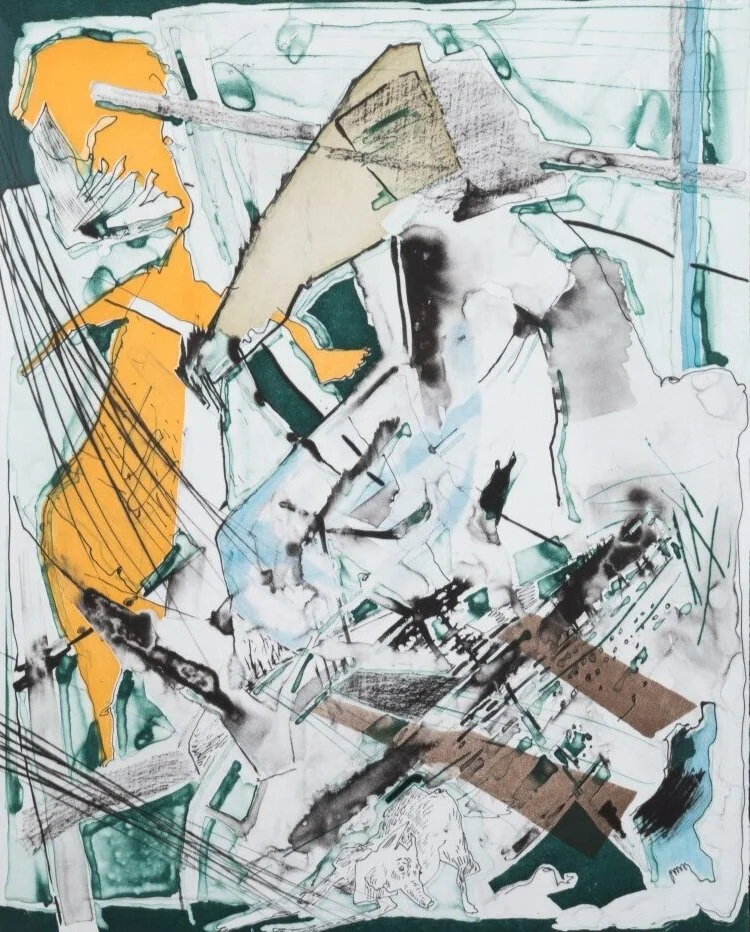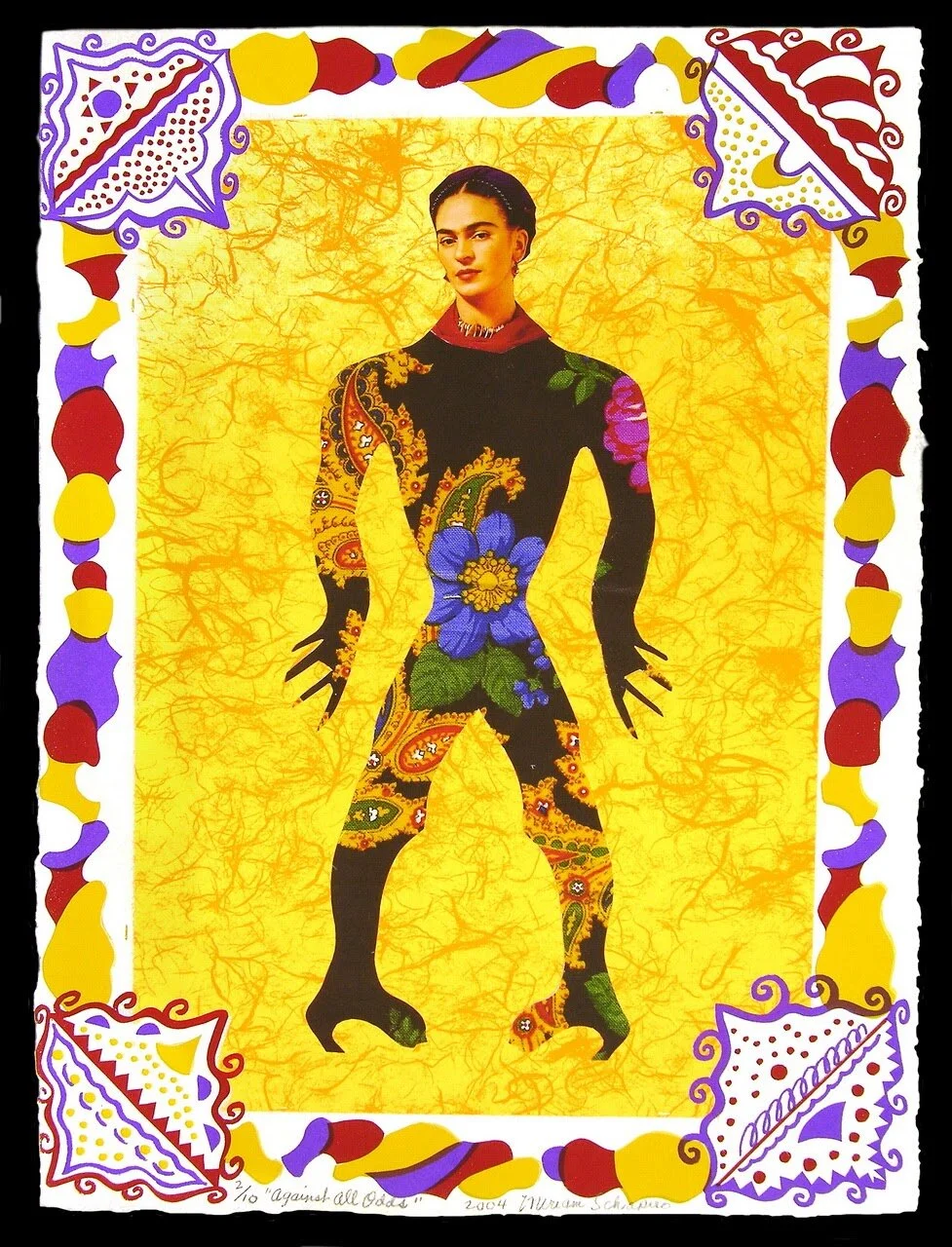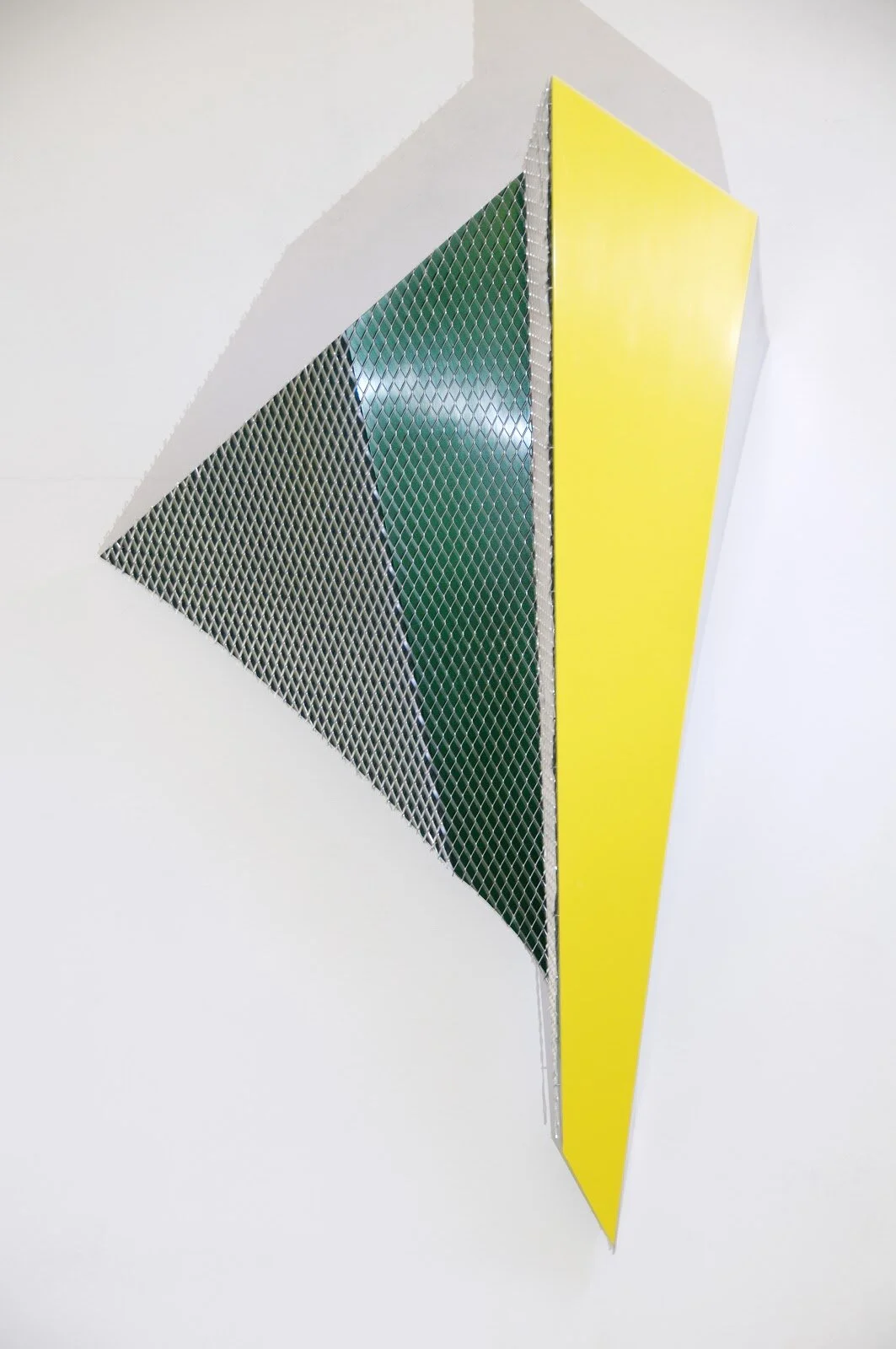Women's History Month: Women Artists From The Collection
/Women’s History Month is dedicated to celebrating and acknowledging the contributions of women to events large and small in history and contemporary society. For years, female artists have been kept from — or underrepresented in — gallery shows, museums, and history books. Women artists who changed history and the art world should be commemorated for their dedication and bravery to speak up for themselves and their dedication to the craft. In honor of the month, we are highlighting five influential women from our collection: Josephine Sacabo, Miriam Schapiro, Judy Chicago, Barbara Kruger, and Fonchen Lord. These phenomenal women have challenged social norms set against them in order to remain true to their individual characters and their artistry.
Josephine Sacabo
Sacabo was born in 1944 in Laredo, Texas. After receiving her education at Bard College in New York, Sacabo lived and worked extensively in France and England before moving to New Orleans, where she still resides today. Her early work, influenced by Robert Frank, Josef Koudelka, and Henri Cartier-Bresson, represented traditional photojournalism. Over the years, Sacabo began to use poetry as the inspiration for her work. Through her whimsical and surreal images, the viewer is transported into a new world, each with a story to interpret. Sacabo creates each image through the intricate and delicate process of photopolymer gravures, which she prints on everything from handmade Japanese tissue and chine-collés to velvet rag paper.
Over the course of Sacabo’s long career, her work has been shown in over 40 galleries and museums throughout Europe, the United States, and Mexico. Her photographs are held in a number of museum permanent collections,in addition to that of the Polk Museum of Art, including those of the Metropolitan Museum of Art, la Bibliothéque Nationale in Paris, France, the New Orleans Museum of Art, and more.
(https://josephinesacabo.com/)
Josephine Sacabo, American, The Writer, not dated, Photogravure, Gift of Josephine Sacabo, PMA Permanent Collection 2017.1
Miriam Schapiro
Born in 1923, Miriam Schapiro was a Canadian-born artist based in the United States. In addition to being a painter, printmaker, and sculptor, Schapiro was also considered a leader of the Feminist Art and Pattern and Decoration movements. Schapiro’s artistic career started in 1955 when she began making hard-edge abstract paintings. By the 1970s, she was already being celebrated as one of the most influential women artists of the period, collaborating with Judy Chicago and forming the first feminist art program.
During this time, Schapiro sought to diffuse the line between fine art and craft. Craft elements — including fabric work, quilting, and appliqué — are often associated with women’s activities in the home. Schapiro wanted not merely to show the value of these elements and techniques but wanted also to elevate their status by including them in her fine art works. She eventually began to describe these works as “femmage,” which was not only determined by the materials used but also the context and the artist. Per Schapiro’s vision for “femmage,” this form of art could be made solely by women, further celebrating activities and materials previously thought to be traditional “women’s work.”
Schapiro continued to advocate for women throughout her lifetime. She co-founded the New York Feminist Art Institute, which held women-led workshops, lectures, and classes. She also became a member of the College Art Association to ensure that more women were included in art history textbooks and literature.
(http://www.artnet.com/artists/miriam-schapiro/)
Miriam Schapiro, 1923-2015, Canadian-American, Paper Doll Series: Against All Odds, 2004, Monotype screenprint with computer-generated collage elements, Museum Purchase through the Docent Acquisition and Patron Members Acquisition Fund, PMA Permanent Collection 2005.6.1
Judy Chicago
Judy Chicago is an American feminist artist born in Chicago, Illinois in 1939. Chicago’s professional career began in the early 1960s when she created a large body of minimalist artwork. Creating sculptures, installations, colorful paintings, and more, her initial body of work explores the use of color, shape, and pattern, which was influential to her later work as an artist. In the early 1970s, Chicago began to use her art to share the history and culture of women, as well as her own experiences. This inspired some of her most famous works, including “The Dinner Party” (1974) and collaborations with other women artists, such as “Womenhouse” (1972).
Chicago, like Schapiro, is considered one of the pioneers of the Feminist Art Movement, leading the way through her art, art education, and writings. In the 1970s, Chicago established the first feminist art program at California State University. In addition to being widely recognized for her work in art historical and feminist literature, Chicago is a writer herself, publishing “The Dinner Party: Restoring Women to History” in 2014.
While Chicago is best known for her work during the 1970s, her career continues to the present day. In recent years, Chicago has worked with a number of different media and techniques, including those she deploys in novel ways in “The Birth Project” (1980-85), “Powerplay” (1982-87), and “Atmospheres” (1968-74). In 2018, Chicago was included in Time Magazine’s “100 Most Influential People” and named “Most Influential Artist” by Artsy Magazine. Her work is countless museum collections, including SFMOMA, the Art Institute of Chicago, the Tate Museum, and, of course, the Polk Museum of Art.
(https://www.judychicago.com/)
Judy Chicago, American, b. 1939, My Dove in the Cleft of the Rocks, 1998, HelioRelief/Lithograph with hand-coloring on the text page, Graphicstudio Subscription Purchase through the Kent Harrison Memorial Acquisition Fund, PMA Permanent Collection 1998.13.
Barbara Kruger
Barbara Kruger was born in Newark, New Jersey, in 1945. Kruger began her career as a graphic designer and photo editor, most notably working on the design team at Condé Nast Publications. While there, she designed for a number of popular publications including Vogue, House and Garden, Aperture, among others.
Her early career and education played an influential role in her unique artistic style that developed later on. Using found photos, Kruger’s work layers images with text; using black and white photos and bold black or red text, her compositions pull the viewer into a conversation about the struggle for power and control, themes that her captions frequently address. The majority of her statements center on feminism, power, consumerism, and sexuality. Some of her instantly recognizable slogans read: “Your body is a battleground” and "I shop, therefore I am.” Through her work, Kruger has inspired body positivity and challenged the expectations and beauty standards placed upon women both by themselves and by society at large.
Kruger’s work has been featured in museums and galleries worldwide, such as MOMA, the Art Institute of Chicago, and the Walker Art Center, as well as publicly on billboards, posters, public parks, and even a train station. Kruger now lives and works between New York and Los Angeles
(https://art21.org/artist/barbara-kruger/)
Barbara Kruger, American, b. 1945, Trance (#3264), 1979, Photomontage, Gift of Norma & William Roth, PMA Permanent Collection 1990.55.
Fonchen Lord
Fonchen Lord was born in St. Louis, MO in 1911. She received her BFA from Radcliffe College and an MA from Washington University. Following her college and graduate education, Lord began practicing as an artist primarily based out of Lakeland, Florida, creating over 270 pieces of art throughout her career.
Over the course of that long career, Lord experimented with color and movement, using repeating patterns and primary colors to create Opt Art images. This work later inspired the three-dimensional metal work she created during her Minimalist period, and, in turn, Lord had an impact on the acceptance of architectural design and minimalist art as true art forms. Lord also created colorful, large scale paintings conveying movement and energy through fluid brush strokes. These pieces, often inspired by music, contrast highly with her precise, hard-edged geometric pieces.
Today, you can find Lord’s work throughout Lakeland in parks, Florida Southern College’s campus, and on view at the Polk Museum of Art
(http://fonchenlord.com/)
Fonchen Lord, American, 1911-1993, Fermoy, 1986-1987, Lacquered aluminum,Gift of William W. Lord, PMA Permanent Collection 1992.18.
Come celebrate Women’s History Month and see the works of these inspiring women’s artists, among many others, at the Polk Museum of Art.






